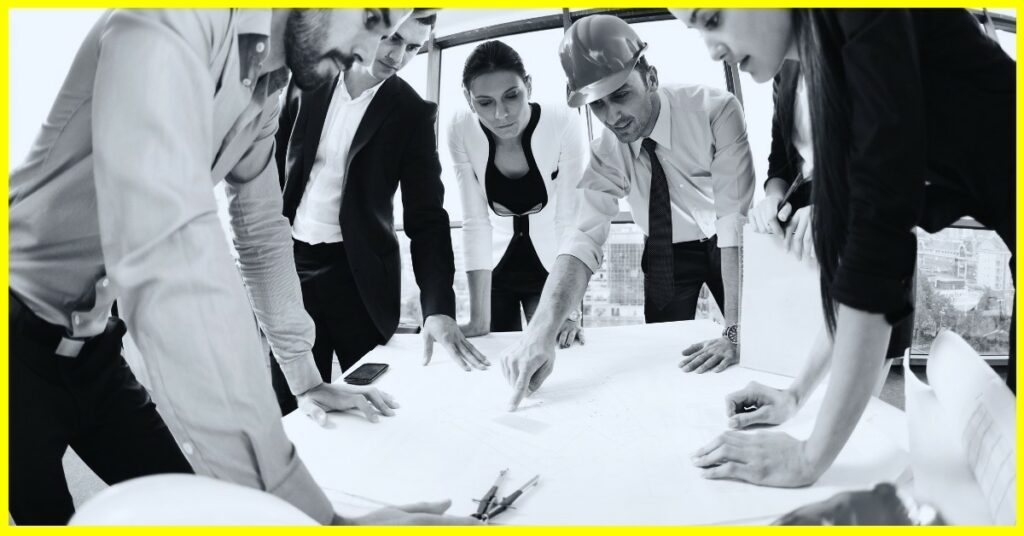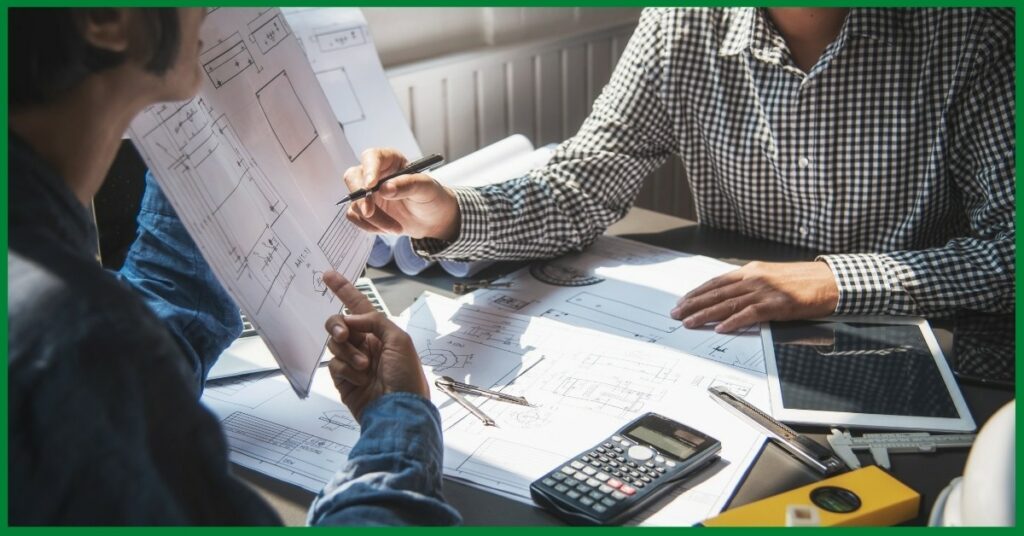The versatility of the team.
Design and Build.
Professionals must have knowledge that goes far beyond their learned skills. What they have learned in their studies and practice is extremely important, but they cannot rely on this alone. Here they need knowledge of various – often seemingly unrelated – issues. Professionals need to be able to move seamlessly between theoretical knowledge while drawing on their practical experience on construction sites. At the same time, they need to be familiar with prefabrication technology and be fluent in modern BIM environments, and they should have a finger on the pulse of software for advanced 3D design review.
Before starting to work on a given multi-discipline project, it is crucial to skillfully divide responsibilities. Each specialist employee must have a predetermined goal and know his or her role in the project. Otherwise, the project will be poorly coordinated. It may look good in theory, but its implementation, in practice, will leave a lot to be desired. When selecting specialists for a project, each designer must know the history of the projects in which they have participated. The bigger and more prestigious the previous projects were, the higher the value of such a specialist. While this is often the case, it is not the rule. It can happen that a person has worked on many less prestigious and important projects, but thanks to the multitude of orders they have received in the past, they are much more experienced. Every designer should remember to get to know the expertise of his or her employees. That they know what they are doing is clear, but their knowledge should reach further – beyond the construction site, so to speak.

How to improve communication within the team?
A real problem may be a designer who is so focused on his work that he does not consult his team, does not inform anyone about what data he needs, and if he does ask for it, he asks general questions while demanding detailed data. It may also be the case that a designer puts everything off until the last minute, perhaps with the belief that he or she will have time for everything. They may not follow a Spiral Model of Communication in his or her work whereby all aspects and details of the things to be done will be discussed meticulously before the work starts – this applies both to the division of responsibilities and calculations when creating expensive and complex 3D models. The solution to the above-discussed problems, which result from a lack of smooth communication between colleagues is very simple: just meet with the entire design team and discuss all aspects in detail, clarify any inaccuracies and clearly communicate your expectations.

Designer and specialists.
The most common model of project management is that one designer has 2-3 specialists under him/her. It does not seem like a large number, but there are cases when the designer is faced with such a volume of work that he simply does not have time for his employees. Assistants do many calculations under his supervision, but the designer must properly distribute this work – and there are problems in this matter. The result is chaos, the effects of which – in this case, are errors in calculations – appear at the final stage of work. Often it is difficult to catch them quickly, and when it is possible, it is more due to the intuition of an experienced designer than to meticulous and reliable work of the whole team. To avoid such a situation, where mistakes appear on the last straight, it is necessary to ensure that the designer devotes enough time to assistants, giving them room to show off, but not leading them by the hand all the time. Meeting and talking to the assistants is the best way out of this situation. During such a meeting you should find out whether the designer devotes enough time to the assistants and they will be sure that they can always count on his professional advice.

Cooperation between designer and draughtsman (modeller).
Drawings of a project are a key element for the contractor, as well as for the client. Therefore a very important aspect of fruitful cooperation is good communication between the designer and the drafter. Imagine a situation when the draughtsman does not have the routing clearly presented, does not know the location of equipment, or the detailed idea of the layout of the installation. He will surely draw everything wrong. If the material specification is not clarified quickly enough in BIM, it will simply be reflected in an incorrect list of necessary materials.
However, there is a simple way out of this situation.
The designer should show the draughtsman a piece of the 3D model in the browser and talk about it in detail, as well as about further collaboration. Besides, the draughtsman should present the elements in the project which will need to be detailed. Here, attention should be paid to empty answers or those where temporary parameters appear, to be changed later. The pillar of cooperation between the designer and the drafter should be a detailed set of data, which can be clearly filtered to find useful information as quickly as possible – for example, by entering the appropriate code.
Communication during the collaboration may also fail because of the draftsman’s fault. He may simply not consult about his work with the designer. You do not have to wait long to see the effects as they usually appear sooner rather than later. It is worth the effort to prevent such a situation. The best solution is for the designer to agree on the details of the project at the coordination meeting and immediately pass such information on to the drafter. Let’s imagine a situation when the draughtsman allows himself to be arbitrary and, for example, places a hydrophore set in the boiler room, explaining his decision by the fact that there just happened to be free space there. Once on the building site, the contractor will, of course, question the choice to put it in the boiler room where, because of high temperatures, water will become contaminated.
The solution to the communication problems between the drafter and the designer is to meet with them both at the same time. We will immediately get to know the relationship between them, which will help us to assess the quality of their cooperation. Having a situation where both parties complement each other creatively in discussions will bode very well for the future.

A team with poor communication – how to recognise it?
Lack of communication within the whole team will not only affect the effectiveness of the tasks performed, but will also cast its shadow on effective cooperation with people from outside. You do not have to drive a damaged car on a long journey to realise that there is something wrong with it. The very sound of the engine will tell you this. A team of co-workers who do not have a clear objective, a group of people who are divided and who are not serious about the projects they are commissioned to work on, is a situation to be strongly avoided. If you hire such a team to work with, you will lose both time and money, as well as nerves. I am no stranger to such situations, where even the most promising projects were not completed when I started working with an unsuitable subcontractor.
Finding a good team and a good contractor, while time-consuming is a worthwhile task. You need to hold several meetings to get to know these people, try to get a feel for the atmosphere between them. It’s best to do this before the work starts, not during it. You’ll save yourself a lot of potential unpleasant surprises.
If you want to find out how we at Domaszczyński & Team have professionally solved the problems described above, just give us a call.


